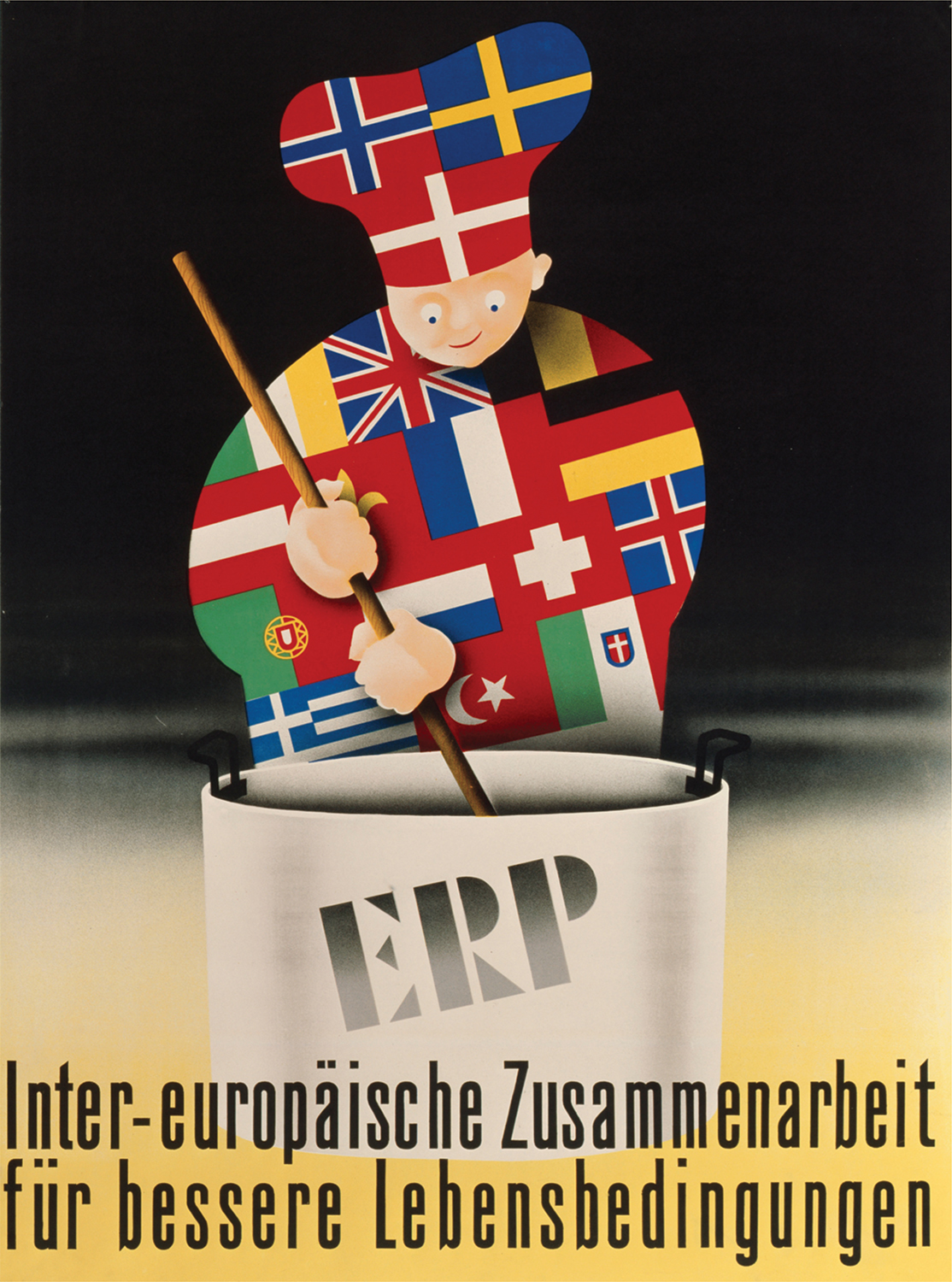The American Promise:
Printed Page 750
VISUALIZING HISTORY
Selling the Marshall Plan

The United States launched the Marshall Plan in 1948 primarily to alleviate the devastation that might otherwise send Europeans into the arms of the Soviet Union. To promote and contain German reindustrialization by integrating its economy with those of other European countries, the United States required the European nations to coordinate their responses to Marshall’s invitation to the European Recovery Program (ERP). With this requirement for cooperation, American policymakers allied with efforts of European leaders, such as French statesmen Jean Monnet and Robert Schuman and German Chancellor Konrad Audenauer, to knit together the European powers so that they could never again slaughter millions of each other’s citizens as they had done twice in the past half century.
In 1950 the ERP launched a poster contest on the subject, “Intra-
Using the title of the competition itself for his work, German artist Alfred Lutz more pointedly appealed to individuals’ material needs: The poster depicts a chef adorned with the flags of European nations stirring a pot that says ERP. The reference to food would have resonated with Germans’ memories of hunger and starvation in the early postwar years.
“We Build a New Europe,” submitted by Austrian Kurt Krapeik, shows the wartime devastation in a burned tree and the promise of recovery in new shoots. The European nations are represented by flags in the nest, which is being supplied by doves, symbols of peace. How does the artist refer to American economic assistance?
First-


The vision portrayed by all the artists was most fully realized in 1993, when the European Union was born. It now has twenty-
SOURCES: “Intra-
Questions for Analysis
- What attitudes about war and peace do you see reflected in the posters? How do the posters address these themes?
- Which work do you find most compelling and why?
Connect to the Big Idea
How was the Marshall Plan similar to and different from other foreign assistance programs of the Truman administration?